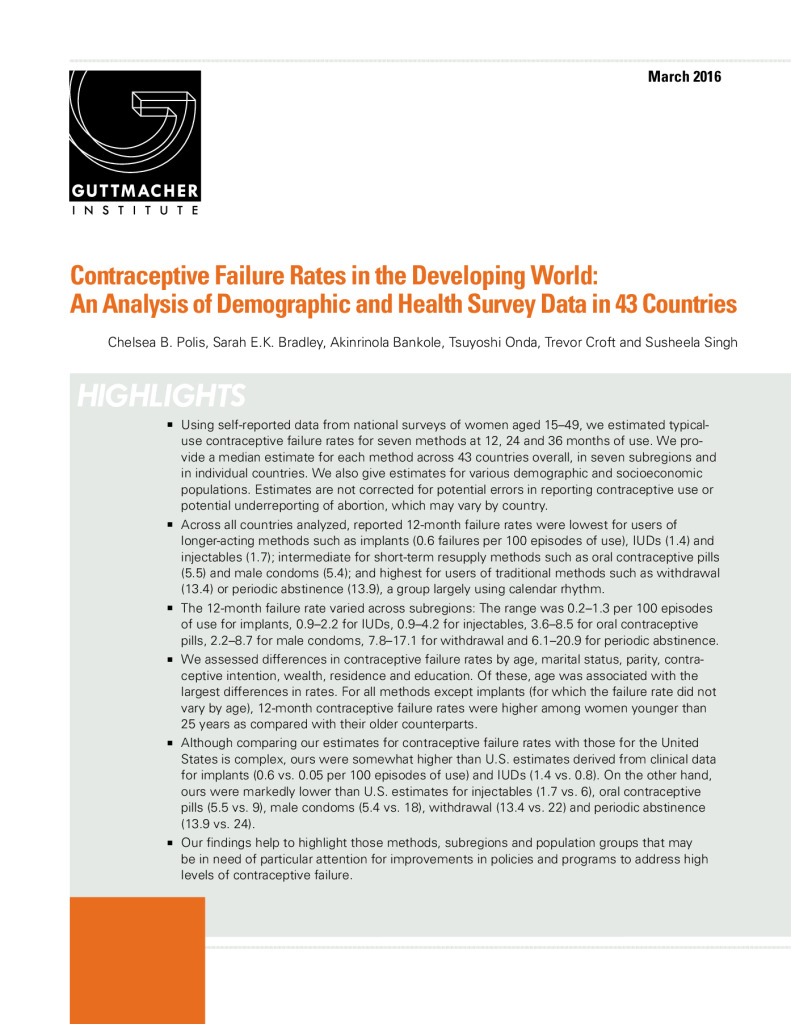
Resources
Contraceptive Failure Rates in the Developing World: An Analysis of Demographic and Health Survey Data in 43 Countries
Publications
Previous

Implant Access Program: Expanding Family Planning ...
Next

Emergency contraception in post-conflict Somalia: ...
Women younger than 25 have higher rates of contraceptive failure than their older counterparts.
In the most comprehensive study to date of contraceptive failure rates in the developing world, researchers found that overall, failure rates are lowest for users of longer-acting contraceptive methods (IUDs, implants or injectables), intermediate for users of shorter-acting methods (oral contraceptive pills or male condoms) and highest for users of traditional methods (withdrawal or calendar rhythm).
“Of the 74 million unintended pregnancies each year in the developing world, a significant proportion—30%—are due to contraceptive failure among women using traditional or modern methods,” said Chelsea Polis, senior research scientist at the Guttmacher Institute and the study’s lead author. “Our findings on contraceptive failure rates can inform strategies to improve the provision of contraceptive services, focusing efforts where they are most needed, and helping women and couples to correctly and consistently use the methods best suited to their needs.”









